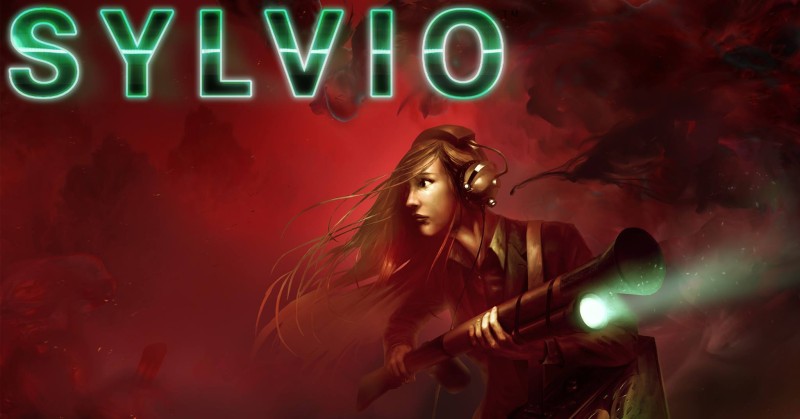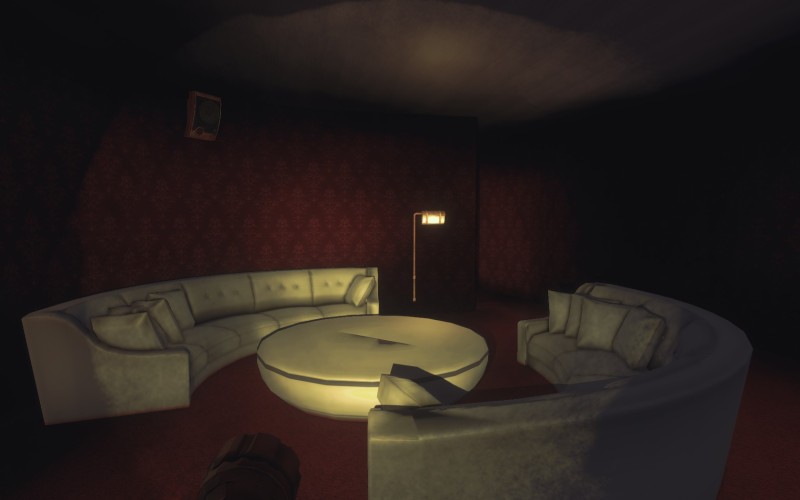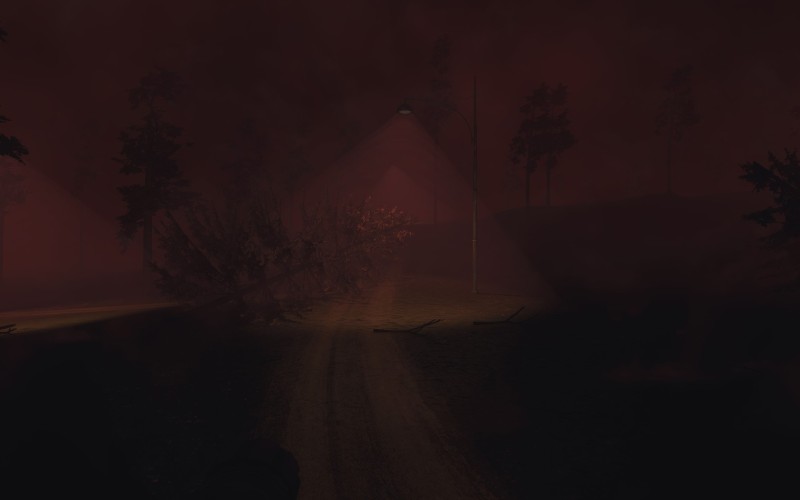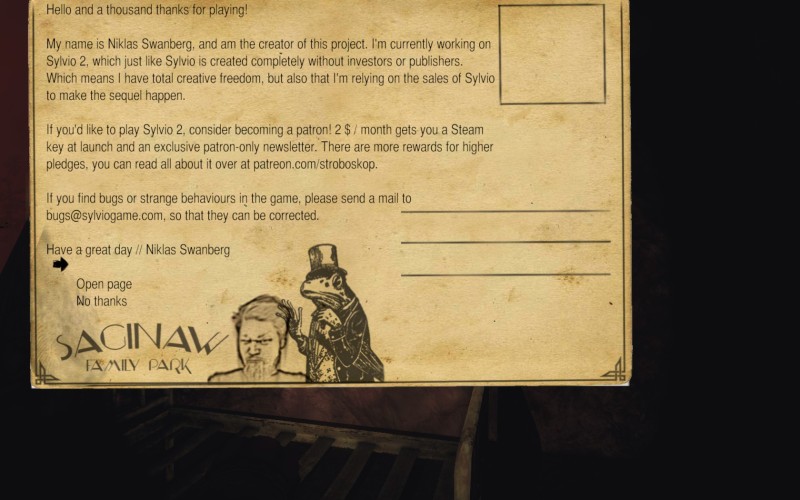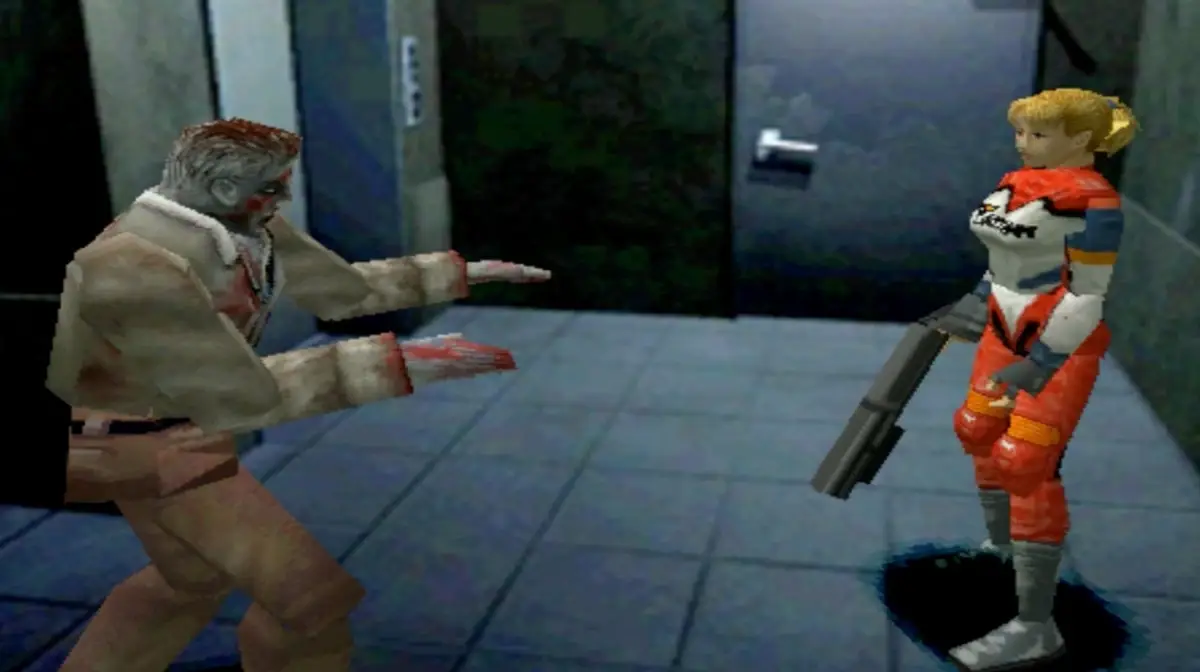Sylvio is a fun game, reminiscent of the games of consoles past. It’s the game that brought me to Rely on Horror; it re-lit the spark in me for indie horror that had gone out after I left fansite Silent Hill Experienced. This single-developer game with the weird voices in recorded static gameplay, clunky controls, and total lack of a map to navigate by brought me back to the roots of horror. It had its rough edges and quirks, but the story was compelling, as there were a hundred pieces to that story that you had to go hunt down in the darkness, and the use of EVP as a way to interact with the world and progress through levels was genuinely intriguing. Niklas, the mind behind Sylvio, has been working on a completely remastered version of the game that releases today. He is also working on Sylvio 2, which will combine EVP and video recording. He took a break from his busy production schedule to answer a few questions about the games and his inspiration.
Q: Stroboskop has released four games so far, with the Remastered version of Sylvio and the upcoming Sylvio: Step Into the Light rounding it out to half a dozen titles in under ten years, with several awards along the way. What are the biggest skills you’ve polished or picked up over the last decade of game development, and the three years you’ve dedicated to Sylvio?
A skill of disrespecting myself and the initial idea. In the beginning I was very cautious of making big changes to gameplay or the concept. Nowadays I tend to trust my gut more, if something doesn’t feel right, I change it until it does. Rip it up and redo, no matter how big chunk it is! Still, cherish your backup routines so that you’re able to undo. It might just have been on a foolish whim.
Q: I loved Sylvio, but can understand that it had a few quirks. What can we expect to see updated in the Remastered version of the game?
Everything is updated actually. Most noticeable is the graphics, but also the gameplay and GUI. The original Sylvio had this a bit quirky mechanic where you had to chose your inventory and the use it by left-clicking. This has all been translated to just involve the action button. A lot of people found the old way confusing, and I’d hate to confuse or frustrate anyone, at least not in that way. In the other hand, when creating horror confusion is a very powerful tool.
Q: The storyline for Sylvio involves a state park buried under a landslide, hiding some very dark secrets. As a developer in Sweden, what made the Northeastern United States call out to you as the best setting for this story? Will we see Juliette traveling far for Step Into the Light?
I’ve always been a huge fan of Stephen King, and his use of the tradition and mystery surrounding the Native Americans. So I guess I was inspired by that. I wanted the setting to be in a park with a native american-sounding name, and so I ended up with Saginaw. Where Juliette will be traveling in Sylvio 2 is too soon to tell, but the story picks up where we left in Sylvio 1.
Q: Sylvio has a huge amount of lore hidden throughout the game. It isn’t necessary to find all of it to complete the game, but it does help players understand what happened in the location Juliette is exploring. When you set out to create Sylvio, did you expect to give the story this much depth, or did it just develop organically as you fleshed out the main characters?
It absolutely developed organically. I had no clue what the story would be about when I started out. The main character was actually an Irish dude for a long time. But it just grew as I went, and those moments of AHA, THAT’S what happened, were truly amazing. It was like I had no part of it, it just unfolded itself in front of me as I went. When it all was tied together in the end, I was just amazed. It really felt like the story was presenting itself to me. Maybe that sounds cliché or pompous, but that was my experience. I know a lot of people are confused with the story and the ending, but it’s not much I can do about that now. There are so many different storylines involved, so I wouldn’t know where to begin explaining. I think Sylvio 2 might help straighten some question marks though.

Q: Sylvio is one of those games that not only covers creepy or horrifying territory, but also rips at heartstrings a bit. When you began writing the storyline, did you know you were going to be making the turn the story takes towards the end?
No, I honestly didn’t. The game and the story developed organically beside each other, but now I feel like there were never any alternatives to how the story ended up. I mean I had a LOT of different endings while working on it, but when this came up, the other options just disappeared. It was like vacuuming a dusty painting, keep at it and in the end you’ll see the whole picture.
Q: Sylvio seems to draw on both Native American and European legends, which is interesting. They tie in together nicely, building on a common theme to create the lore that gives Sylvio its past. How did you come to build the lore in the game?
I rent my office desk in an abandoned fish store in the south of Stockholm, and it is not the most inspiring of places. So I often take small walks during the day, and that’s when a lot of the ideas come. The name Sylvio popped up during one of those walks, and it just stayed with me, for whatever reason. When I got back I looked it up online, and I learnt it roughly translates into ”he who lives in the woods” in Italian. So if there’s something evil living in the woods, with an Italian name, naturally Italians had named him. So that’s how I came up with the european settlers, burning a tribe of native americans and starting a curse. Also I believe that we as Europeans have a dark history as total d*cks forcing ourselves upon the rest of the world, which is another strong reason for me to add it to the story.
Q: Sylvio touches on some incredibly disturbing material, from the cult in the village, to the actions taken by village leaders following the landslide. What inspired you when you were creating the lore and the characters in the story? What led you to write Robin?
Evil is never more evil than when it’s within a family. A family is supposed to be the safe spot in a cold world, so when that place is bad to you, there really is no place left to turn. So an evil family cult with children is my definition of pure evil. There is also something fascinating with a group of people blindly following a leader, and to explore the different sides of that leader. How does he manipulate, why does he do it? What are his goals? What are the driving forces behind his horrendous actions? Robin is the opposite to that leader. She is a victim of her own family’s wicked ways, and she has no-one to turn to. They are her everything, so she does what is asked of her.
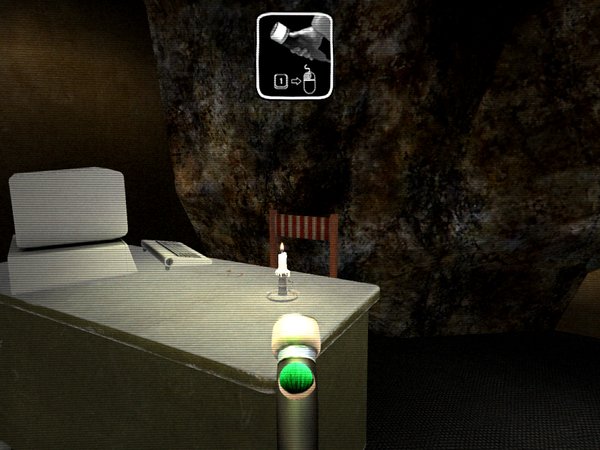
Q: With Step Into the Light, we will be moving from Electronic Voice Phenomena to playing with video recording. Both are fresh takes on exploration horror. What inspired you to use these mechanisms for interacting with the landscape? How have they enhanced or limited the development process?
For me, horror is 90% sound and 10% visuals. It’s what you don’t see that scares you. Through the history of mankind it has always been the unknown that has scared us. Sound is brilliant in that way, because you can disguise a sound in a million different ways. When you’re working with visuals, the only thing you really have is darkness, which gets old really fast. Before starting out with Sylvio I played so many horror games, and they all had me walk through dark rooms and dark corridors. Always this darkness, and I was so bored with it. With Sylvio, I wanted to do something else. And that’s also why Sylvio 2 is set in broad daylight.
The limits with a sound-based concept is that it’s hard to demonstrate. Especially in a world of indie titles I need to be able to show my game in one or two seconds. With Sylvio I’d have to make them turn their speakers on, understand the gameplay, and still not be able to get through, because it’s all about the immersion. I’m very thankful that there were a handful of reviewers who did a full play through at an early stage and wrote great reviews. I think indie game journalism is such a brilliant and under-appreciated part of media. So many talented, devoted people.
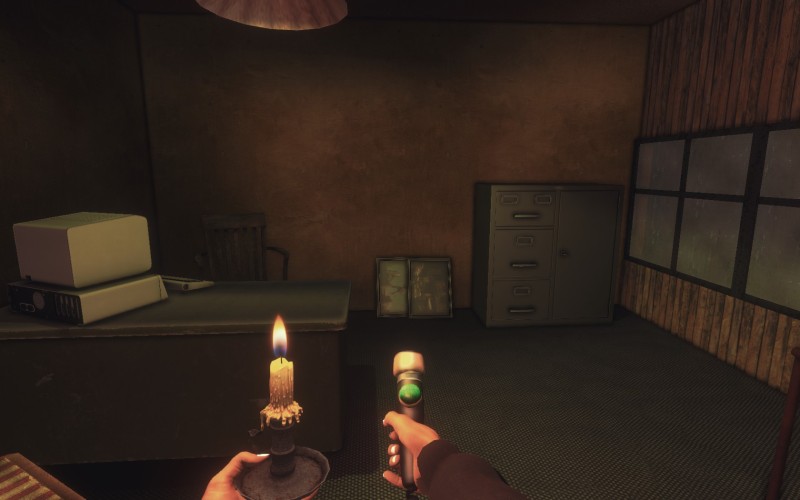
Q: You created all of the sound and music for the game. What made you go with the upbeat music on the car radio and cutscenes? It’s fun and unexpected. Did you record and then individually distort all of the messages players discover in the static?
I wanted the driving levels to be like a breather from the horror. There aren’t any dangers in those parts of the game, and I wanted the music to reflect that. Also, I wanted the music to feel a bit like driving music, so you’d enjoy driving around and exploring the park. The sounds and voices in the game are made in a lot of different ways, using walkie talkies, voice recordings, old radio theatre shows, text-to-speech software and radio snippets, all edited together and distorted in a lot of different ways. It took me quite a while to find that EVP-quality, but I’m actually kind of proud of how they turned out. I see the voices and recordings as the backbone of the game.
Q: Sylvio takes advantage of low lighting and low resolution graphics to help build the atmosphere of being trapped in an abandoned park at night, alone in the mist. When you began work on the game, did you set out with the intent to use those qualities, or did they come into play to enhance the atmosphere later in development?
From the beginning I had no idea. It wasn’t until later the story suggested that the red mist had an important part and that it took place during one night. The low resolution stuff is the way of the solo dev, you have to find a way to make things completable. If I had tried to make it look like GTA V, I’d still be working on the first room. You have to find a visual level where you’re happy, and then try to be as consistent as possible. But a lot has been improved in the remastered version. Maybe it’s not GTA V, but I hope it’s more pleasing to the eye.
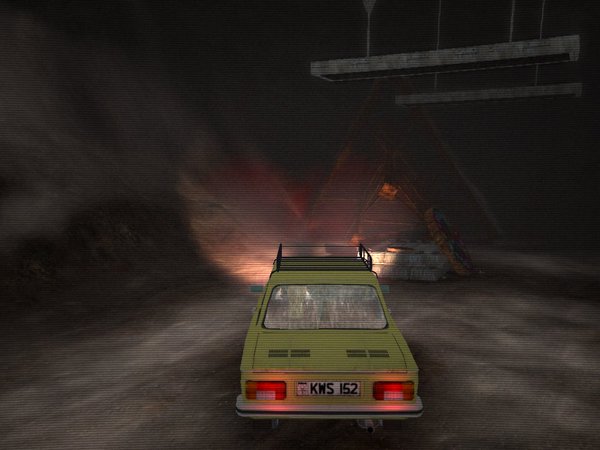
Q: Some players have commented that they dislike the very calm, almost detached voice acting in Sylvio. I enjoy it, and have conversed with other horror fans about the way it combines horror with ASMR. Did you change the voice acting at all for the Remastered version and Step Into the Light, or will we get to enjoy the original voice of Juliette?
I’m glad you like it! I have absolutely not touched any of the Juliette recordings, and am not planning to. I feel like it’s a major part of what Sylvio is, and I’ll certainly continue the way of Juliette into the sequel. Giant applause to Swedish actress Maia Hansson Bergqvist for the exceptional voice work. (She will work on Sylvio 2 as well!)
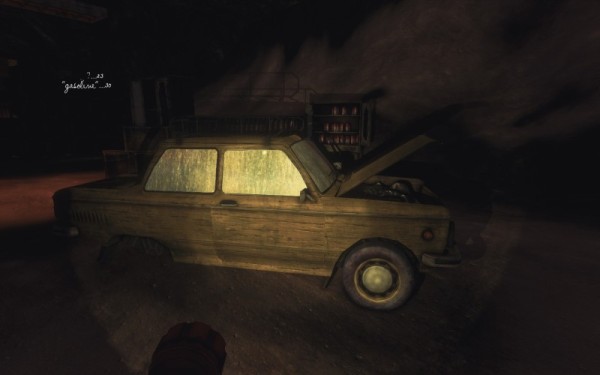
Q: After Step Into the Light, are there plans to continue the Sylvio series?
After that I’ll be taking on something completely different. I believe it is a two part series.
Q: What do you hope player take away from the game after playing Sylvio? Is there any reading you would suggest to people interested in the inspiration for the game?
I hope they’ve experienced something original, and that they found themselves truly immersed at some point. It’s absolutely fantastic to hear about people enjoying the game and getting big moments out of it. I am very thankful to them for giving an unknown indie horror title a shot.
We will be posting a review of the Sylvio in its remastered form this week. The original is one of our curated horror titles on Steam. The game can be purchased for 50% off this week here, and Niklas has a Patreon for fans who want to directly support his development work.

